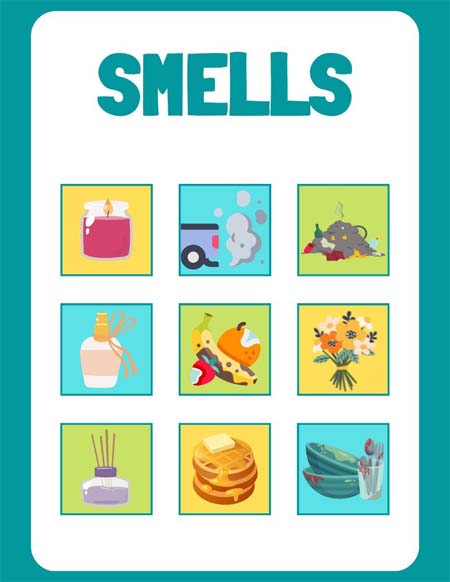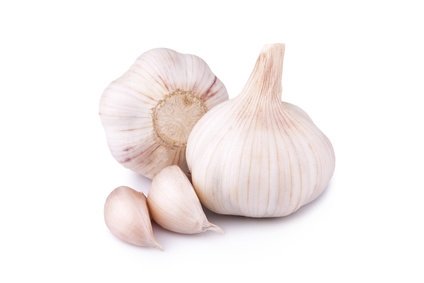COVID LOSS OF SMELL
COVID loss of smell was one of the early symptoms of the pandemic. People infected with COVID-19 could lose their sense of taste as well, but for this article we will be concerned only with the loss of smell.
In some cases, those who lost their sense of smell often did not display other symptoms. Even after a year, many still did not recover from the loss and many of them were left with unpleasant scents having taken the place of normally delightful ones.
COVID loss of smell was experienced more often with the original
COVID-19 variant rather than with the more recently emerged (as of January 2023) Omicron and
subvariant strains. Studies have shown that the newer variants are less
frequently and less severely affecting the functioning of the sense of smell.
In fact, latest research has shown that 90% of people affected by COVID loss of
smell completely recover within 2 years.
It has been estimated that over 27 million people worldwide have experienced COVID loss of smell and for many, their symptoms have persisted for over six months. For these people, the loss of smell can affect their quality of life for months after the initial infection. And 27 million people, though only a small percentage of the world’s population, are still a lot of people!
HOW IS THE DAMAGE TO THE OLFACTORY SYSTEM CAUSED?
The olfactory system of the body is responsible for the sense of smell. Scientists at first thought COVID-19 infected neurons in the nose responsible for transmitting smells from the environment into the brain. Those neurons can be found in the olfactory bulbs at the top of each nostril. They send axons or processes to unique sensory spots in the brain. Initially, there was concern that COVID-19 could eventually reach the brain from these actions.
Now we know the virus does not enter those neurons. It instead attacks supporting cells known as sustentacular cells. These cells have many ACE2 receptors on their surfaces and we now know the COVID-19 virus targets these receptors and attacks them. Olfactory sensory neurons themselves do not have these receptors.
Sustentacular cells provide nourishment and protection to the sensory neurons from birth. When they are attacked, they leave the olfactory neurons vulnerable and deprived of nutrients.
Additionally, neurons in the nose are unlike many other cells in the body. They undergo rebirth every two to three months. It appears that when the supporting sustentacular cells are infected by COVID-19, there is some sort of long-term effect on the ability of the neurons to regenerate themselves with time. That may be the reason that some people’s loss of the sense of smell recovers and then there is a second wave of smell loss because the regenerative capacity is not working properly.
PAROSMIA and ANOSIA
Parosmia is the medical term for distorted smells. Anosia is the total loss of smell. Parosmia and Anosia can be a problem for those people whose senses do not return right away. With Parosmia, smells can be very disturbing. Some categories of distorted smells include feces, garbage, old dirty socks, rotting flesh, etc.
The interesting fact is that parosmia tends to occur or reoccur at the three-month mark, about the time olfactory neurons would naturally be regenerating. If the axons from the neurons are hitting a different spot in the brain reserved for a different odor, the perception of smell is going to be totally different.
Sometimes all one can do is wait until those axons pull back and try to find their way to the right spot or wait until the current neurons die off and new ones send out axons that can find the right spot.
WHAT ARE SOME CONSEQUENCES OF A PERSON PERMANENTLY LOSING THE SENSE OF SMELL?
- Those unfortunate people who permanently lose their sense of smell are left vulnerable to dangers, especially food poisoning and fire.
- They are not able to appreciate the flavor of food and eating is a part of how we interact as humans.
- Not desiring to eat can also negatively impact weight and nutrition.
- A parent would feel a loss if he or she couldn’t connect to their child through the ‘newborn baby smell.’
- Smell dysfunction has been linked with depression, but more study is needed.
Definitely, those with permanent smell loss experience a significant reduction in their quality of life.
CAN COVID LOSS OF SMELL BE RESTORED THROUGH TREATMENT?
There is a lack of research on this subject, so there are few established treatments available. There is one option available and that is smell training. People sniff certain odors regularly to relearn them. It doesn’t always work for everyone but may help improve smell function in some.
A number of researchers have been working to develop an olfactory implant. This would be a device embedded in the nose that would sense odor chemicals and send electrical signals to the brain. Unfortunately, this device is years away from being offered as an approved treatment.
WHO IS MORE SUSCEPTIBLE TO COVID LOSS OF SMELL?
- Older people and those with chronic diseases that affect the nervous system are often more susceptible to olfactory damage from COVID-19. Diabetes is one such chronic disease because the disease affects the small vessels in the body and disturbs the blood, nutrient, and oxygen flow to vessels such as the olfactory nerves.
- People who have chronic sinus or allergy inflammation in the nose are also likely to be at high risk for olfactory damage.
- Those people with a certain gene mutation may also be more susceptible but further study is needed.
- Adolescents have als0 been affected by the loss of the sense of smell.
- Men seem to experience the symptoms of COVID loss of smell more acutely while women generally take longer to recover their sense of smell more than men.
- Though further investigation is needed, smoking seems to be a potential factor in recovery time from sensory dysfunction.
IS THERE A DIFFERENCE IN THE COVID SYMPTOMS OF TODAY?
Currently, two of the omicron subvariants (and there will be more coming) appear to be causing the majority of COVID-19 cases in the US. The most common symptoms of COVID-19 are looking much milder today than they did at the beginning of the pandemic. As a matter of fact, the symptoms of a mild cold, the flu, RSV, and COVID can often be similar. That may be because omicron subvariants tend to stay more in the upper respiratory tract, meaning the virus doesn't affect the lungs as much as it used to.
Characteristic symptoms of COVID-19 in the early days of the pandemic were fever, cough, shortness of breath, and a loss of taste or smell. These are still some of the symptoms of a coronavirus infection, but the range of symptoms has changed.
As of today (December 2022), the 10 most commonly reported COVID19 symptoms are:
- Sore throat
- Runny nose
- Blocked nose
- Sneezing
- Cough without phlegm (a dry cough)
- Headache
- Cough with phlegm (a wet cough)
- Hoarse voice
- Muscle aches and pain
- Altered sense of smell
Being up to date on COVID vaccines and boosters can offer some level of protection from a prior infection and may make COVID-19 symptoms seem less intense.
When COVID cases surge during different times of the year, it would be wise to mask up, wash hands regularly, social distance, and keep away as much as possible from large inside gatherings.
"The Cleanest Clean You've Ever Seen."
by
ABC Oriental Rug & Carpet Cleaning Co.
130 Cecil Malone Drive Ithaca, NY 14850
607-272-1566














